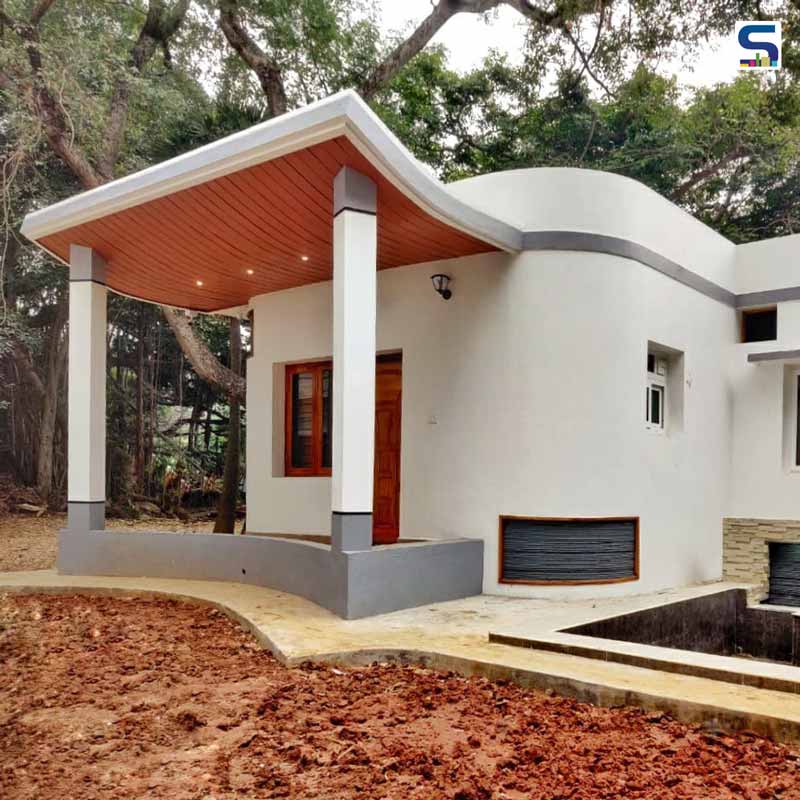
Inspiring hopes for millions of Indians who are in search of affordable housing, Tvasta Manufacturing Solutions, a tech start up by three IIT Madras alumni has created India's first fully 3D printed home. A report by SURFACES REPORTER (SR)
Virtually inaugurated by Honourable Finance Minister Smt Nirmala Sitharaman, the house is created using 3D Concrete printing. According to the makers, the startup is an endeavour to "break barriers and open up the gates for ‘Concrete 3D Printing’ in the Construction Industry."
Read more: The 3D Printed Balloon Lamp by Designer Chris Granneberg
Created using Tvasta NIRMAAN – a self made industry-standard Concrete 3D Printer, with a build volume of 2.2 m x 1.8 m x 1.5 m and a printing speed of 100 mm/s, the project is undertaken in collaboration with Habitat for Humanity, USA – an NGO that is helping people worldwide realize their dream of owning a home.
Read more: Scientists at GE Research 3D Printed A Portable Device That Produces Water Out Of Thin Air
This structure has multiple advantages including
- Potentially reduces overall construction cost significantly
- Order of magnitude difference in overall construction time
- Brings down the related carbon footprint
- Increases productivity of labour involved
- Offers raw material flexibility/utilisation of eco-friendly materials.
Read more: A 3D Printed Bio Based Micro Home for a Post Covid Future by Oliver Thomas and Amey Kandalgaonkar
“Tvasta’s 3D Printing technology is built to bring digital technological advantages to the realm of construction. The focus is to make the process available to all sections of the construction industry, including affordable housing and large-scale infrastructure building. The reduction in overall time required for construction involves an order of magnitude change. What would require months to build can be built in days. Currently, the capability is to print the superstructure of a house that would require 4 to 5 months to build conventionally in about 5 days. The technology has also been designed in such a way that it is sustainable and green. The material used contains industrial waste and recycled material. This reduces the overall carbon footprint of the structure during construction,” Adithya VS, CEO, Tvasta Manufacturing Solutions tells media.
Text & image credit: Tvasta & The Better India
Keep reading SURFACES REPORTER for more such articles and stories.
Join us in SOCIAL MEDIA to stay updated
SR FACEBOOK | SR LINKEDIN | SR INSTAGRAM | SR YOUTUBE| SR TWITTER
Further, Subscribe to our magazine | Sign Up for the FREE Surfaces Reporter Magazine Newsletter
You may also like to read about:
Lightweight Bamboo Construction and 3D-Printing Technology Used in the Making of This Pavilion by Swiss Architecture Students | ETH Zuric
First 3D-Printed Building in India, Made Using Local Building Materials
& more..